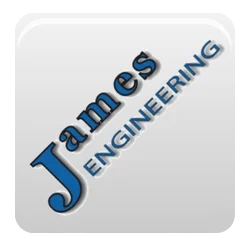Deburring Machine vs. Chamfering Machine:
Understanding the Key Distinctions for Automated Gear Finishing
A simple guide for deburring and chamfering machines, understanding the differences between these two processes is crucial for achieving precise and efficient automated machine part finishing in gear manufacturing.
Machine Deburring in Gear Manufacturing: Deburring plays a critical role in gear manufacturing by removing burrs, sharp edges, and imperfections from machined gear components. These imperfections can lead to improper gear meshing, increased wear, and reduced gear lifespan if not adequately addressed. Traditional methods of hand deburring are time-consuming and can introduce human error into the process, impacting product quality and consistency.
Machine Chamfering in Gear Manufacturing: Chamfering is equally important in gear manufacturing as it involves creating beveled edges or angles on gear teeth or other components. This process not only enhances the gear's aesthetics but also reduces stress concentrations at critical points, improving gear durability and performance. Achieving precise chamfering is crucial for ensuring proper gear meshing and smooth operation within gear assemblies.
Key Differences Between Deburring and Chamfering Machines:
Purpose: Deburring machines are specifically designed to remove burrs and imperfections from machined surfaces, while chamfering machines focus on creating beveled edges or angles on workpiece edges or corners.
Tooling: Deburring machines utilize tools such as brushes, abrasives, or cutting edges tailored for burr removal, whereas chamfering machines use specialized tools for creating precise bevels.
Process Control: Deburring machines offer control over burr size, shape, and location removal, while chamfering machines provide control over the angle, depth, and width of chamfers.
Application: Deburring machines are widely used in industries where precise part finishing is essential, including automotive, aerospace, and medical sectors. Chamfering machines find applications in gear manufacturing, metalworking, and various industries.
Among advanced deburring and chamfering solutions, highly specialized Deburring Machines by James Engineering stand out for their superior capabilities in multi-finishing capabilities:
Precision: The MAX ensures consistent and precise deburring, chamfering, polishing, and other finishing operations critical for gear quality.
Versatility: With customizable tooling and programmable controls, The MAX adapts to various gear types, sizes, and materials, offering unmatched flexibility.
Efficiency: By integrating multiple finishing operations into a single automated process, The MAX streamlines production, reduces cycle times, and minimizes labor costs.
Quality Assurance: The MAX's advanced Focused Deburring™ technology ensure adherence to strict quality standards, enhancing overall gear performance and reliability again and again.
Understanding the distinctions between deburring and chamfering processes is imperative in selecting the right machine for your gear or part manufacturing operation.
Further Exploration:
For in-depth insights into gear manufacturing processes, deburring, chamfering, and The MAX's capabilities, explore our videos or contact us at Sales@James-Engineering.com.
We are dedicated to excellence in deburring and chamfering technology for gear machining and part manufacturing.





